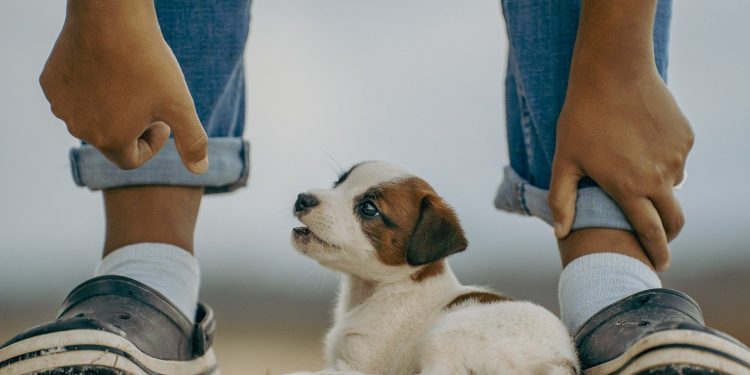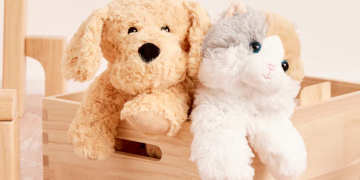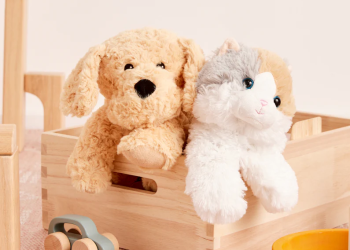Adopting a pet is an incredibly rewarding experience, but it also comes with the responsibility of helping your new furry companion adjust to their new home. Establishing trust and building a strong bond with your pet are essential steps in creating a loving and harmonious relationship. Whether you’ve adopted a puppy, kitten, or an older animal, these strategies will help you nurture a connection that will last a lifetime.
Preparing for Your Pet’s Arrival
Create a Safe Space
- Set up a designated area in your home where your pet can feel secure. This could include a bed, blanket, toys, and easy access to food and water.
- Ensure the space is free of hazards such as electrical cords, toxic plants, or small items that could be swallowed.
Gather Essential Supplies
- For Dogs: Leash, collar, food and water bowls, toys, and a comfortable bed.
- For Cats: Litter box, scratching post, food and water bowls, and a cozy resting spot.
- For Small Animals: Enclosure, bedding, food, and enrichment items.
Establish a Routine
- Pets thrive on consistency. Plan feeding times, walks, and play sessions to provide structure and security for your new companion.
The First Few Days
Give Them Time to Adjust
- Allow your pet to explore their new environment at their own pace. Avoid overwhelming them with too many people or activities initially.
- Be patient if they seem nervous or hesitant; this is a normal part of the adjustment process.
Use Positive Reinforcement
- Reward good behavior with treats, praise, or toys to encourage trust and cooperation.
- Avoid punishment, which can create fear and hinder the bonding process.
Respect Their Boundaries
- Some pets may be shy or fearful at first. Let them come to you when they feel comfortable rather than forcing interaction.
Building Trust
Spend Quality Time Together
- Engage in activities your pet enjoys, such as walks, playtime, or quiet cuddling sessions.
- Regular one-on-one time strengthens your bond and helps your pet feel loved.
Use Gentle Communication
- Speak to your pet in a calm and soothing tone.
- Use their name frequently to help them recognize it and associate it with positive experiences.
Be Consistent
- Follow through on promises, such as feeding times or play sessions, to build reliability and trust.
Training and Socialization
Start Basic Training Early
- Teach commands like “sit,” “stay,” and “come” using positive reinforcement techniques.
- For cats, focus on litter training and teaching appropriate scratching behaviors.
Gradual Socialization
- Expose your pet to new environments, people, and other animals slowly to help them build confidence.
- Monitor their reactions and adjust the pace as needed to prevent stress.
Address Behavioral Challenges
- If your pet exhibits fear, aggression, or other issues, consult a professional trainer or behaviorist for guidance.
Strengthening the Bond
Playtime
- Interactive play is a great way to connect with your pet while keeping them physically and mentally stimulated.
- Use toys that mimic natural behaviors, such as fetch for dogs or wand toys for cats.
Physical Affection
- Many pets enjoy being petted, but pay attention to their body language to ensure they’re comfortable.
- Grooming sessions, such as brushing, can also be a bonding activity.
Shared Experiences
- Take your dog on walks, hikes, or trips to the park to create memorable moments together.
- Spend quiet time with cats by reading or relaxing in the same room.
Monitoring Health and Well-Being
Schedule a Veterinary Check-Up
- Visit the vet within the first few weeks to ensure your pet is healthy and up-to-date on vaccinations.
- Discuss any concerns or special needs your pet may have.
Provide Proper Nutrition
- Feed your pet a high-quality diet suited to their age, size, and activity level.
- Offer healthy treats in moderation to reinforce positive behaviors.
Observe Behavioral Changes
- Watch for signs of stress or discomfort, such as excessive hiding, barking, or changes in appetite.
- Address issues promptly to maintain your pet’s emotional well-being.
Involving the Whole Family
Assign Responsibilities
- Divide tasks such as feeding, grooming, and walking among family members to ensure everyone is involved.
Educate Children
- Teach kids how to interact with pets gently and respectfully.
- Supervise interactions to prevent accidental harm or stress.
Include Pets in Family Activities
- Involve your pet in family routines, such as evening walks or movie nights, to make them feel like a valued member of the household.
Overcoming Challenges
Patience is Key
- Adjusting to a new home can take weeks or even months. Be patient and give your pet the time they need to settle in.
Seek Professional Help
- If you encounter persistent behavioral issues, don’t hesitate to consult a trainer or veterinarian.
Celebrate Small Wins
- Acknowledge progress, no matter how small, to stay motivated and encourage positive changes in your pet.
The Joy of Bonding with a Rescue Pet
Adopting a pet from a shelter or rescue organization is a deeply rewarding experience. As your pet adjusts to their new home, you’ll witness their personality blossom and your connection deepen. By providing love, patience, and consistency, you can build a bond that enriches both your lives for years to come.












